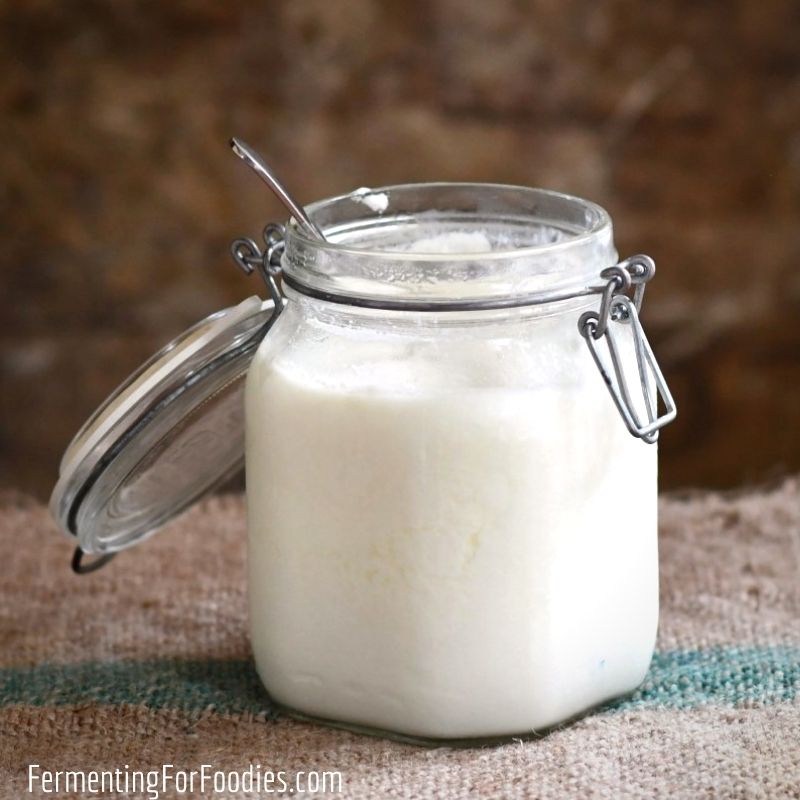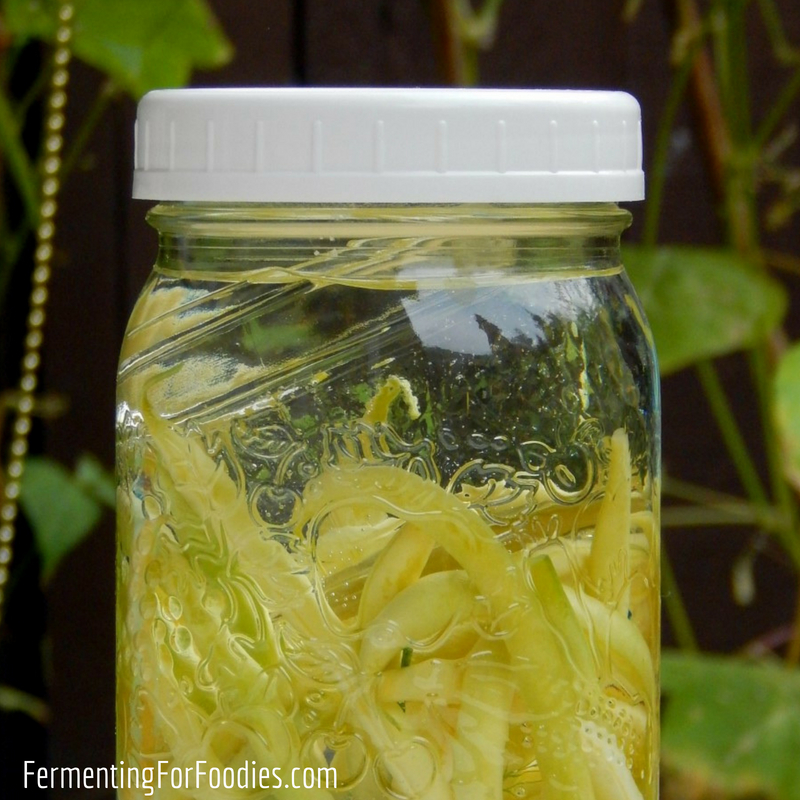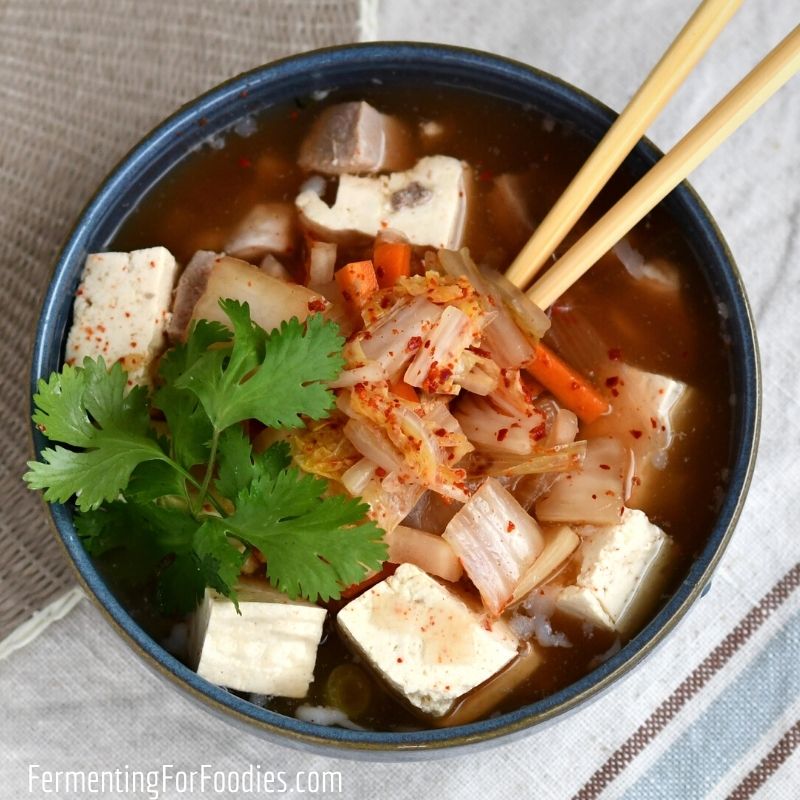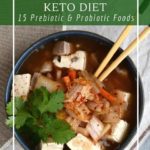Health and weight loss are the cornerstones of the keto diet. While limiting sugars and starches is a good start, it is also important to make sure you eat for gut health on the keto diet.

HOW TO Eat for Gut Health ON THE KETO DIET:
Unfortunately, the keto diet is often linked to poor gut health and an overall decrease in bacterial diversity. However, that doesn’t have to be the case.
A healthy microbiome requires three simple things:
- Limited sugars: Since limiting sugar is part of the standard keto diet, this is pretty easy to do. The only trick is to avoid certain keto-friendly sweeteners, like sugar alcohols, which will ferment in the digestive system and feed the wrong kind of gut bacteria and yeasts.
- Prebiotics: Fiber and resistant starches are necessary for feeding healthy gut bacteria. A healthy keto diet should feature a ton of vegetables which will provide some fiber along with tons of antioxidants, vitamins, and minerals. However, it’s important to make sure you have a good dose of fiber every day. I recommend psyllium husk and flax which are both high fiber and keto-friendly.
- Probiotics: Probiotics are a good way to encourage diversity in your microbiome. I recommend enjoying homemade fermented foods instead of purchasing a probiotic supplement because you are guaranteed to get a good dose of live bacteria.
Here are 15 keto-friendly probiotic and prebiotic recipes.
CULTURED DAIRY
Cultured dairy is the most reliable way to get a dose of probiotics. Dairy cultures are naturally great at surviving digestion.

- Homemade yogurt that is cultured for 8 hours or more will have very little lactose.
- Milk kefir is a probiotic and low lactose beverage.
- Cultured butter is easy, fun, and delicious.
- Whipping cream cultured with buttermilk is really easy. It takes less than 24 hours to sour at room temperature.
CULTURED Dairy ALTERNATIVES
Even if you can’t tolerate dairy, it’s easy to make a nut-based cultured yogurt alternative.
- Cultured coconut cream is thick, creamy, and delicious.
- Cashew yogurt is a thick and sour “yogurt” made out of soaked and blended cashews.
- Almond milk yogurt is a drinkable probiotic yogurt that is absolutely delicious. Make your own almond milk and use the leftover ground almonds for keto-friendly baking!
VEGETABLE FERMENTS
All vegetables can be fermented into delicious and probiotic pickles. Fermenting also reduces the sugars in high-carb vegetables making them keto-friendly! Here are a few of my favorite recipes:

- Kimchi is a spicy condiment from Korea. It’s delicious in a keto kimchi soup.
- Curtido is a sauerkraut-like condiment from El Salvador.
- Fermented salsa is party-perfect.
- Fermenting guacamole is a natural way to prevent browning.
- Pickled green beans are a great snack.
PREBIOTIC Keto FOODS
There are so many delicious keto-friendly prebiotic recipes. Here are a few of my favorites:
- Grainy flaxseed crackers are super high in fiber and perfect with cheese.
- Psyllium husk bread is high in gut-friendly psyllium husk.
- Dandelion green salad: Raw dandelion greens are really high in fiber, so toss them into a salad for a good dose of prebiotics.




It’s been very nice to see some keto-focused fermentation recipe and probiotic suggestions. I’d never heard of fermented guacamole before, but it sounds VERY interesting! I’ll definitely be trying that out for myself!